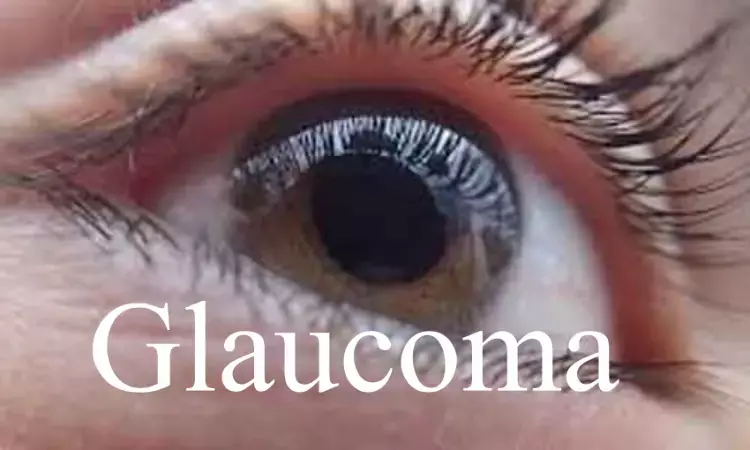- Home
- Medical news & Guidelines
- Anesthesiology
- Cardiology and CTVS
- Critical Care
- Dentistry
- Dermatology
- Diabetes and Endocrinology
- ENT
- Gastroenterology
- Medicine
- Nephrology
- Neurology
- Obstretics-Gynaecology
- Oncology
- Ophthalmology
- Orthopaedics
- Pediatrics-Neonatology
- Psychiatry
- Pulmonology
- Radiology
- Surgery
- Urology
- Laboratory Medicine
- Diet
- Nursing
- Paramedical
- Physiotherapy
- Health news
- Fact Check
- Bone Health Fact Check
- Brain Health Fact Check
- Cancer Related Fact Check
- Child Care Fact Check
- Dental and oral health fact check
- Diabetes and metabolic health fact check
- Diet and Nutrition Fact Check
- Eye and ENT Care Fact Check
- Fitness fact check
- Gut health fact check
- Heart health fact check
- Kidney health fact check
- Medical education fact check
- Men's health fact check
- Respiratory fact check
- Skin and hair care fact check
- Vaccine and Immunization fact check
- Women's health fact check
- AYUSH
- State News
- Andaman and Nicobar Islands
- Andhra Pradesh
- Arunachal Pradesh
- Assam
- Bihar
- Chandigarh
- Chattisgarh
- Dadra and Nagar Haveli
- Daman and Diu
- Delhi
- Goa
- Gujarat
- Haryana
- Himachal Pradesh
- Jammu & Kashmir
- Jharkhand
- Karnataka
- Kerala
- Ladakh
- Lakshadweep
- Madhya Pradesh
- Maharashtra
- Manipur
- Meghalaya
- Mizoram
- Nagaland
- Odisha
- Puducherry
- Punjab
- Rajasthan
- Sikkim
- Tamil Nadu
- Telangana
- Tripura
- Uttar Pradesh
- Uttrakhand
- West Bengal
- Medical Education
- Industry
Loss of visual function may precede retinal layer thinning in glaucoma: Study

USA: True functional change precedes thinning of retinal nerve fiber layer (RNFL) in glaucoma, suggests a recent study in the journal Investigative Ophthalmology & Visual Science.
Previous studies have suggested structural change to be detectable before functional change in glaucoma. However, this may be related to the lower variability and hence narrower limits of structural tests. In this study, Stuart K. Gardiner, Devers Eye Institute, Legacy Research Institute, Portland, Oregon, United States, and colleagues determined whether a time lag exists between the true rates of change in structure and function, regardless of clinical detectability of those changes.
For the purpose, the researchers used structural equation model in order to determine whether the rate of change in function (mean linearized total deviation, AveTDLin) or structure (RNFLT) was predicted by the concurrent or previous rate for the other modality. Rates were calculated over 1135 pairs of consecutive visits from 318 eyes of 164 participants in the Portland Progression Project, with mean 207 days between visits.
Key findings of the study include:
- The rate of change of AveTDLin was predicted by its own rate in the previous time interval, but not by rates of RNFLT change in either the concurrent or previous time interval.
- The rate of RNFLT change was not predicted by concurrent AveTDLin change after adjusting for its own previous rate.
- The rate of AveTDLin change in the previous time interval did significantly improve prediction of the current rate for RNFLT, with P = 0.005, suggesting a time lag of around six months between changes in AveTDLin and RNFLT.
"Although RNFL thinning may be detectable sooner, true functional change appears to predict and precede thinning of the RNFL in glaucoma," concluded the authors.
The study, "Time Lag Between Functional Change and Loss of Retinal Nerve Fiber Layer in Glaucoma," is published in the journal Investigative Ophthalmology & Visual Science.
DOI: https://iovs.arvojournals.org/article.aspx?articleid=2771921
Dr Kamal Kant Kohli-MBBS, DTCD- a chest specialist with more than 30 years of practice and a flair for writing clinical articles, Dr Kamal Kant Kohli joined Medical Dialogues as a Chief Editor of Medical News. Besides writing articles, as an editor, he proofreads and verifies all the medical content published on Medical Dialogues including those coming from journals, studies,medical conferences,guidelines etc. Email: drkohli@medicaldialogues.in. Contact no. 011-43720751


